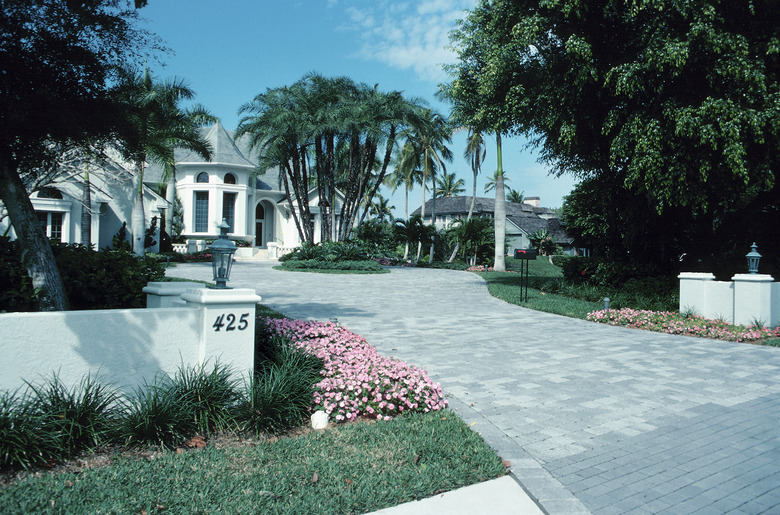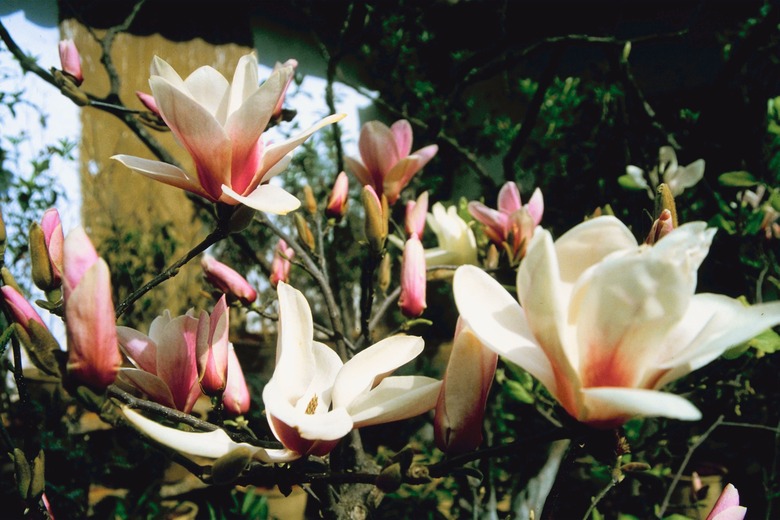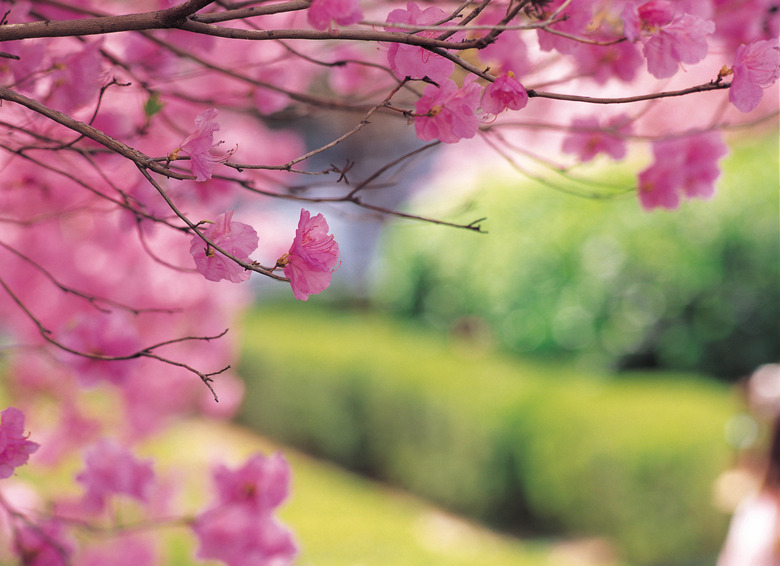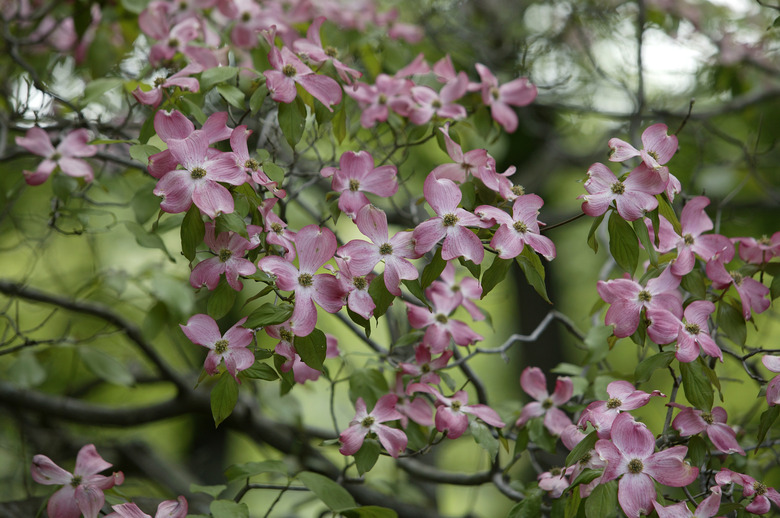The Best Flowering Trees For Driveways
A flowering tree adds softness, color and texture to a home entrance. However, driveways are sensitive landscaping areas. While you may want to plant a tree that will puff with flowers each spring, you want to avoid choosing a tree with an extensive, bulging root system that will buckle and crack driveways.
A flowering tree adds softness, color and texture to a home entrance. However, driveways are sensitive landscaping areas. While you may want to plant a tree that will puff with flowers each spring, you want to avoid choosing a tree with an extensive, bulging root system that will buckle and crack driveways. Picking a tree with a tighter, more controlled root system will be better for your driveway and the tree itself. When picking the best flowering tree for a driveway, keep in mind what you want to avoid—trees with "messy" flowers or dropping fruits—and what you desire, such as colorful autumn leaves.
Tulip Tree (or Yellow Poplar)
Like the magnolia tree, the blooming tulip offers large, cup-like pink, orange and white flowers each spring. Unlike other flowering trees considered messy, the tulip tree drops its flowers in full, or in thick petals, not in pieces. The tulip tree provides ideal shade for a driveway, soaring up to 80 feet at full maturity. This is an ideal flowering tree for a driveway rather than a magnolia because it has a slightly smaller root system so it will not buckle your driveway. Tulip trees live as long as one hundred years so you do not have to worry about planting a new tree every few years.
- A flowering tree adds softness, color and texture to a home entrance.
- When picking the best flowering tree for a driveway, keep in mind what you want to avoid—trees with "messy" flowers or dropping fruits—and what you desire, such as colorful autumn leaves.
Weeping Cherry
The weeping cherry tree, with its long, pink-flowered, drooping branches, makes a beautiful addition to any home entrance. A tree native to Japan, the weeping cherry flowers in early spring and keeps its white and pink blooms until early summer, when the petals drop and create a pink carpet around the tree. The trees thrive in partial sun, ideal under the partial-shade of roof or garage. The weeping cherry tree is a tough, cold-hardy tree, meaning it can withstand freezing temperatures throughout the winter and spring up healthy and pink the next warm season.
Flowering Dogwood
According to the University of Illinois Urban Extension, flowering dogwoods make ideal home landscaping trees. They are often used for hedging or as property barriers because of their full bushy branches and flowers. Growing 15 to 25 feet at full maturity, the trees features white, pink or red flowers, or bracts, each spring. Some dogwood cultivars produce berries in fall and winter. Select a flowering dogwood that does not have berries, so you can avoid messy berry droppings on the driveway. For example, avoid choosing the Cornus florida dogwood variety, which is known for its berries, or "drupes."
- The weeping cherry tree, with its long, pink-flowered, drooping branches, makes a beautiful addition to any home entrance.
- The weeping cherry tree is a tough, cold-hardy tree, meaning it can withstand freezing temperatures throughout the winter and spring up healthy and pink the next warm season.



